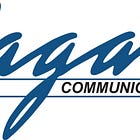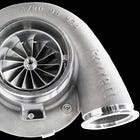Recent Portfolio Changes
Bought 50 shares of Dollar General (DG) for $68.50 a share
Bought 1,000 shares of IGMS for $1.67 a share. This is a busted biotech company that reduced most of its staff and is trading at a discount to its cash position.
Taking part of a merger arbitrage situation where I went long 79 shares of BOID at $50.75, and sold short 75 shares of GBCI at $50.50. GBCI is acquiring BOID in a stock deal where BOID shareholders receive 1.1 shares of GBCI. Going long and short locks in about a 9% deal spread.
I bought 2,000 more shares of Tandy Leather (TLF) at $4.80 a share after they announced the sale of their HQ/distribution center closed for $26.5M
Earnings Updates
Verizon
Verizon (VZ) met its 2024 guidance, reporting earnings per share (EPS) of $4.14, with the stock trading at a price-to-earnings (P/E) ratio of 10. Revenue grew 0.6% for the year, while wireless revenue increased 3.1% year-over-year (YoY). Gross consumer wireless additions rose 5.5%, marking the strongest growth in five years, while debt declined approximately 8% YoY. Looking ahead to 2025, Verizon projects wireless revenue growth of 2-2.8%, EPS growth of 0-3%, and slightly higher capital expenditures. The company also highlighted how its network will support AI applications through edge computing and data centers, positioning itself for future technological advancements. My Verizon position is down about 1.5% from the start of the year, but my dividend yield on cost is 6.9%. I have held VZ for a while now and was hoping this stock would revert to a higher multiple by now. Also the bullish thesis behind Verizon is that they would reduce their debt and capex spend, but they are increasing capex in 2025 and the acquisition of Frontier Communications will increase their debt further.
Bank OZK
Bank OZK (OZK) delivered strong results in 2024, posting record net income each quarter. Q4 net income rose 4% year-over-year (YoY) to $178.1 million, while full-year net income increased 3.8% to $700.3 million. Earnings per share (EPS) for the year came in at $6.14, with a return on equity of 13.8%. Loans and deposits both grew 13.3% in 2024, while book value per share climbed 11.8% to $47.30. Despite these solid fundamentals, the stock is trading at just 1.07x book value—historically low compared to its past multiples above 2x. Shares responded positively after earnings, with my position up 14% year-to-date.
Hurco Companies
Hurco Companies (HURC) reported its full-year 2024 results on January 10, posting a net loss of $16.6 million, though $8.6 million of that was a non-cash tax valuation reduction. This compares to a net income of $4.4 million in 2023, with earnings per share (EPS) at ($2.56) for the year. Sales declined 18% to $186.6 million, which the CEO noted was in line with the broader machine tool industry downturn. The company maintains a strong balance sheet, with net current asset value of $175 million, or $27.20 per share, including $33 million in cash and $153 million in inventory. Despite challenges, shares are trading at a 20% discount to fair value, and my position is up 11.4% so far in January.
Jewett-Cameron Trading Company
Jewett-Cameron reported Q1 FY2025 revenue of $9.3 million, down $0.5 million year-over-year. The company posted a net loss of $0.7 million or $0.19 per share, an improvement from last year’s $1.3 million loss or $0.37 per share. Equity value stands at $24.2 million, with a book value of $6.90 per share. The company has listed its seed processing property for $9 million, well above its $566,000 book value. With net current asset value (NCAV) at $19.7 million, an estimated $5 million in proceeds from the property sale would bring total net asset value to $24.7 million, or $7.05 per share. So far this year my shares are breaking even.
Book Review: The Event-Driven Edge in Investing
Recently I purchased Asif Suria’s The Event-Driven Edge in Investing in order to beef up my knowledge on special situations. In the past, I’ve dabbled in spin-offs and mergers but never focused too much on them. Under the Biden administration, the DOJ blocked major mergers like Spirit Airlines, Albertsons, and U.S. Steel, but now that Trump is in office, I expect a wave of merger activity. I also have an interest in small bank stocks, which are prime candidates for consolidation, making this a great time to incorporate more special situations into my investing, particularly bank mergers.
I previously read Joel Greenblatt’s classic book on special situations but wanted to deepen my understanding. Suria’s book covers merger arbitrage, spin-offs, SPACs, insider buying, and large share buybacks. The merger arbitrage chapter was particularly useful, explaining different deal structures such as all-cash, all-stock, hybrid deals, and CVRs, which I hadn't encountered before. Previously, I only considered all-cash deals, but now I better understand stock-based transactions, where the acquisition price fluctuates with the acquirer’s stock price, causing more volatility in the deal spread. To lock in the spread, one can short the acquirer and go long the target, though this carries greater risk if the deal falls apart. One key insight I hadn’t fully appreciated is the importance of annualized returns—while a 4% gain may not seem impressive, if achieved in three months, it annualizes to 16%, which is quite attractive. The author also notes that, based on 15 years of data, 95% of deals successfully close, which reassures me after losing money in the failed Spirit merger.
Regarding spin-offs, Greenblatt’s traditional thinking suggests they become undervalued due to institutional selling and can have strong management incentives. However, The Event-Driven Edge highlights that corporate America has caught on to this strategy and now often spins off weaker businesses, sometimes burdening them with debt or legal liabilities to make the parent company look better. Suria suggests that, in some cases, buying the parent may be the better move. He also references academic studies showing that spin-offs tend to outperform and introduces the Bloomberg U.S. Spin-off Index, which I wasn’t aware of. The index has performed well in recent years, and I was surprised to see it gained 40% last year. While Greenblatt favored debt-heavy spin-offs due to their potential for amplified returns, this author takes a more cautious approach, recommending low-debt spin-offs or those with manageable debt payments. He also suggests focusing on companies with solid pre-spin performance, as these may offer better long-term opportunities.
Overall I think the book is a good read if you want to learn more about special situations. It breaks down the concepts in an easy manner and provides plenty of recent case studies.
Stocks mentioned: DG 0.00%↑ IGMS 0.00%↑ GBCI 0.00%↑ $BOID TLF 0.00%↑ VZ 0.00%↑ OZK 0.00%↑ HURC 0.00%↑ JCTC 0.00%↑







Could IGMS be a value trap? It reported in a press release of having $183.3mn of cash and equivalents as of Dec 31, 2024. That's down from $218.8mn from the previous quarter's end.
Though most of the staff was released, IGMS has $141.9mn of LT deferred revenue. Isn't this a form of debt? As far as you know, will it have to pay this back?
It has a history of dilutive financings. With it running low on cash, isn't this a material risk, especially since it's effectively a controlled company?
Thanks for write-up and response.
Thank you for taking the time to read my book and sharing your thoughts Tyler!
Glad to hear you found it useful.